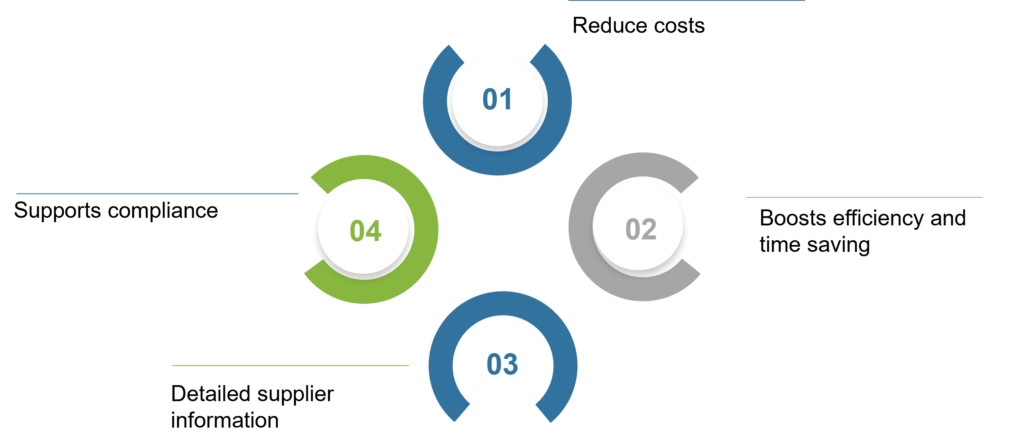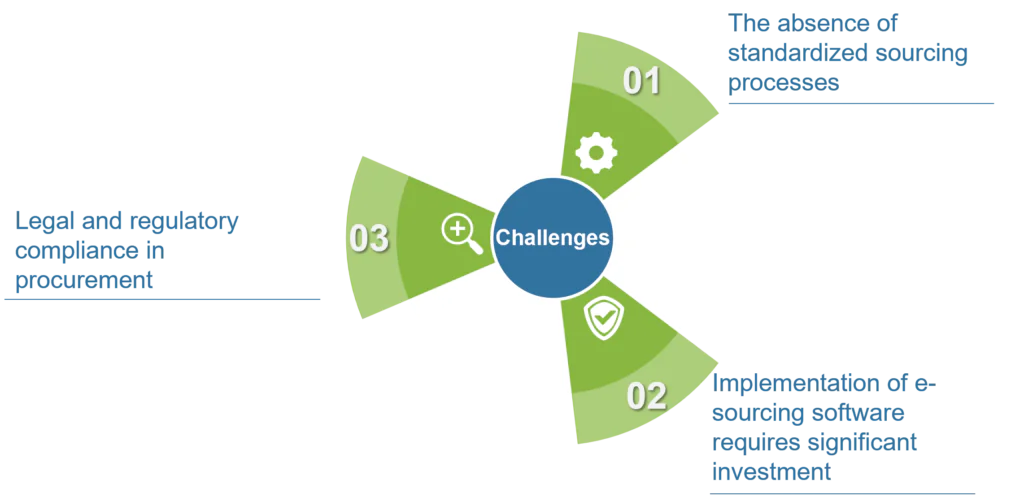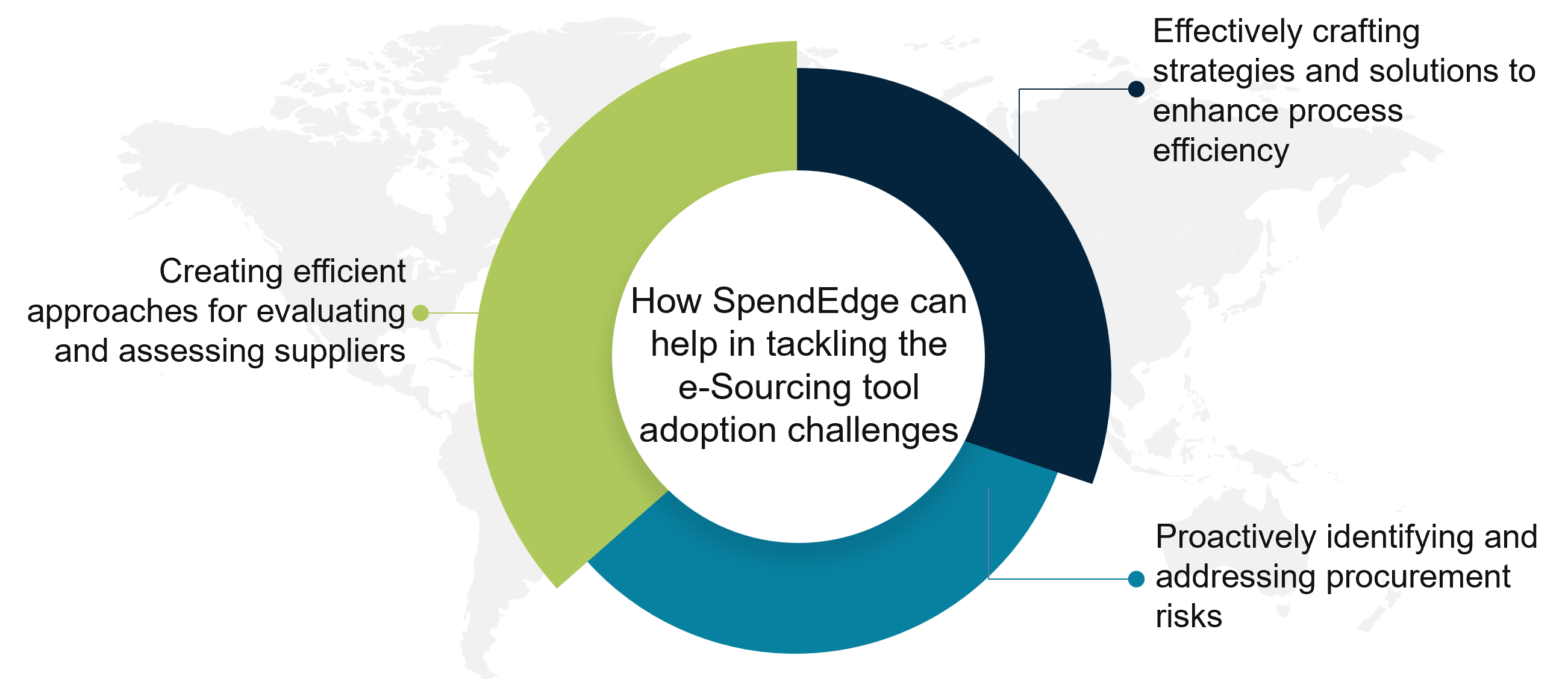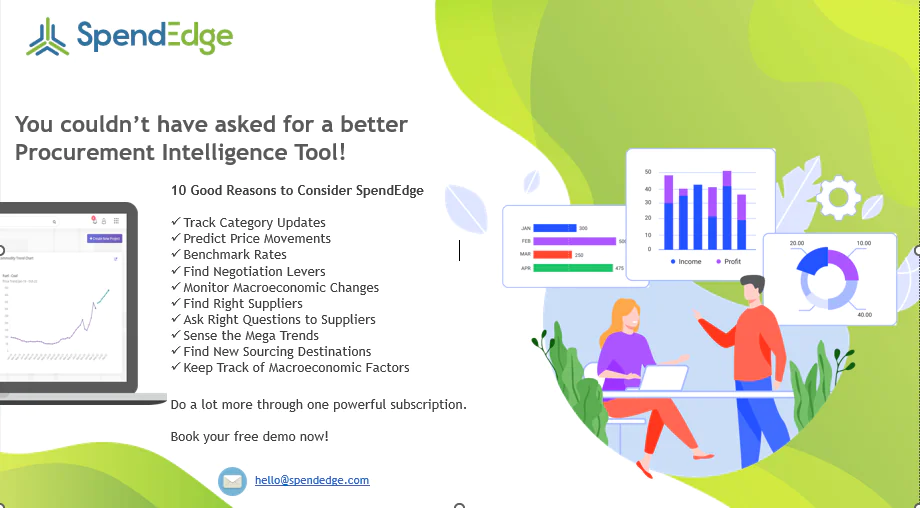By: George Mathew
The current supply chain disruptions necessitate swift and adaptable logistics and procurement solutions. Electronic Sourcing (e-Sourcing) has gained prominence in procurement due to its cost-saving and operational benefits. e-Sourcing involves generating bids from both existing and potential suppliers through a centralized online portal.
E-Sourcing: Overview
The e-sourcing process entails identifying organizational needs, discovering suitable suppliers, soliciting bids, negotiating contracts, and overseeing order management. Leveraging procurement software streamlines these activities, fostering stronger supplier relationships and enabling comprehensive spend analysis.
Effective e-sourcing begins with robust supplier discovery facilitated by market intelligence and insights into category dynamics. Establishing sound supplier governance ensures adherence to quality standards and contractual obligations, while proficient category management optimizes procurement strategies.
Access to reliable supplier data and robust network connections enhances the efficiency of procurement organizations, driving process efficiencies and fostering supply chain innovation. The strategic impact of e-sourcing extends beyond cost savings to shape the future of procurement and fortify supply chains for enterprises.
In this digital structure, e-sourcing, synonymous with electronic sourcing, empowers both suppliers and buyers alike. By fostering collaboration and facilitating seamless transactions, organizations can identify and engage with their preferred providers, strengthening their supply chains and driving sustainable growth.
The adoption of e-sourcing software solutions delivers significant Returns on Investment (ROI) in the procurement field. It enables efficient supplier discovery, negotiation, and collaboration, leading to better sourcing decisions and cost savings. Additionally, e-Sourcing tools often provide data analytics and insights, enhancing strategic sourcing efforts for a competitive edge.
How can E-Sourcing benefit organisations?

1. Reduce costs:
Procurement teams can achieve significant cost savings by using eSourcing to access a broader range of suppliers and leverage different eAuction strategies.
2. Boosts efficiency and time saving:
Electronic sourcing expedites contract award time by reducing procurement specialists’ tendering process duration, freeing up their time for other tasks.
3. Detailed supplier information:
eSourcing portals increase transparency between buyers and suppliers by providing access to all tender opportunities, including key information such as deadlines and status updates.
4. Supports compliance:
Having all procurement-related documents stored in a centralized location makes auditing and compliance with regulatory procedures simpler, as the system transparently displays how and why a supplier was selected.
How E-Sourcing Works?
Step 1. Identification of requirements
The organization begins by determining its procurement needs, specifying the required items, quantities, delivery timelines, and other essential factors.
Step 2. Supplier discovery
Utilizing e-sourcing platforms or existing supplier databases, the organization identifies potential suppliers capable of meeting the specified requirements.
Step 3. Request for Information (RFI)
RFIs are issued to shortlisted suppliers to gather general information about their capabilities, experience, and capacity to meet procurement needs.
Step 4. Request for Proposal (RFP)
Qualified suppliers are invited to submit detailed proposals outlining how they would fulfill the organization’s requirements, including pricing, delivery terms, quality standards, and other pertinent details.
Step 5. Bid evaluation and negotiation
The organization evaluates the submitted proposals based on predefined criteria such as price, quality, delivery time, and supplier reliability, followed by negotiations to finalize terms.
Step 6. Contract award
The contract is awarded to the selected supplier based on the evaluation results and successful negotiations.
Step 7. Order fulfillment and performance monitoring
With the contract in place, the organization places orders with the chosen supplier and continuously monitors their performance to ensure compliance with the agreed terms.
Step 8. Supplier Relationship Management (SRM)
E-sourcing platforms facilitate the development of strong supplier relationships through ongoing communication and collaboration, identifying opportunities for continuous improvement.
Challenges in effective implementation of e-Sourcing software for procurement

The absence of standardized sourcing processes
e-Sourcing tools offer a valuable resource for enhancing consistency in the organization’s sourcing process. However, to for this to be effective, there needs to be a universally accepted sourcing process consistently adhered to across the organization. Many organizations lack a standardized sourcing process. Even in cases where organizations have a documented sourcing process, it is often infrequently followed or inconsistently applied.
Implementation of e-sourcing software requires significant investment
e-Sourcing implementation typically involves a high initial cost, which includes expenses for software, customization, training, integration, security, and ongoing maintenance. This cost can be a significant challenge for organizations, especially smaller businesses with limited budgets. However, the benefits of e-Sourcing, such as improved supplier management and cost savings in the long run, often outweigh these initial expenses.
Legal and regulatory compliance in procurement
The e-sourcing process in procurement is subject to various legal and regulatory requirements, such as data privacy laws, anti-corruption regulations, and industry-specific standards. e-Sourcing tools must have robust security measures in place to safeguard information from cyber threats and data breaches. Ensuring compliance with data protection laws such as GDP or HIPAA creates an extra layer of complexity. Contract management and supplier compliance monitoring are also vital for process improvement.
How SpendEdge can help in tackling the e-Sourcing tool adoption challenges

Creating efficient approaches for evaluating and assessing suppliers
Our sourcing advisors play a crucial role in helping businesses to navigate complex procurement problems. Our specialists offer expert guidance on supplier assessment which involves a through evaluation of potential or existing suppliers, considering factors such as quality, reliability, financial stability, and ethical standards. This assessment helps our clients in mitigating risks and ensuring proper supplier alignment with a company’s requirements and values.
Effectively crafting strategies and solutions to enhance process efficiency
Our experts analyze the data to identify any bottlenecks, redundancies, or inefficiencies in the current process. This involves looking at areas such as supplier selection, negotiation, and procurement. Furthermore, our advisors work client to develop recommendations for improving the sourcing process. These recommendations are tailored to address the specific inefficiencies in the client’s procurement practices.
Proactively identifying and addressing procurement risks
Our experienced advisors assist clients in identifying and minimizing potential project or business risks. These include financial, operational, supply chain disruptions, regulatory challenges, geopolitical factors, and market fluctuations. Our experts also help in understanding the potential consequences and making informed decisions related to both security and compliance of law to protect sensitive information and avoid legal issues.
Types of eSourcing tools
eRFQs
According to a survey conducted a significant part of professionals in the construction sector express doubts about the effectiveness of their Request for Quotation (RFQ) processes. This challenge extends beyond construction, affecting various industries. One solution to streamline this process is through the adoption of an electronic Request for Quotation (eRFQ) system. Such a system enables businesses to efficiently manage quotes and establish simplified communication channels with vendors.
eAuctions
Electronic auctions, commonly known as eAuctions, offer a range of formats. For instance, in a reverse auction, multiple sellers vie for a buyer’s business, with the buyer selecting the most favorable offer. Alternatively, some eAuctions involve an auctioneer presenting bids as they are submitted. Others start with a high price, incrementally decreasing until a buyer accepts. The primary advantage of eAuctions is their ability to provide procurement teams with competitive pricing while saving time. Suppliers also benefit, as eAuctions create an open environment that allows smaller businesses to compete with larger counterparts.
eRFXs
eRFXs, which stand for electronic requests for [x], encompass various types of requests, including proposals, quotations, information, or tenders. These requests involve buyers seeking information from suppliers for evaluation and comparison. By utilizing effective eRFX software, businesses can ensure a fair comparison of offerings from multiple vendors, facilitating better decision-making.
Success story: How SpendEdge helped a global oil and gas company to optimize their procurement processes
Our client is a prominent player in the global oil and gas industry, engaged in exploration, production, and processing crude oil and natural gas.
The client has recognized the need to optimize their procurement processes to active cost-efficiency, enhance supplier relationships, and mitigate risks associated with their supply chain.
Our experts at SpendEdge conducted a thorough analysis of client’s existing procurement process, collaborated with key stakeholders to identify pain points and opportunities for improvement, and developed a customized procurement strategy focused on cost savings and supplier relationship management. Furthermore, our experts conducted a comprehensive supplier assessment to evaluate performance, reliability, and compliance.
Our experts also conducted market research to identify the most suitable e-sourcing tools and software client’s requirements and assisted in the selection and procurement of e-sourcing solutions.
The solution offered by our experts helped the client successfully transform its procurement operations in the oil and gas industry, achieving cost savings, supplier relationship improvements, and enhanced risk mitigation capabilities.

Contact us now to solve your procurement problems!
Conclusion
In the face of evolving supply chain disruptions, electronic sourcing (e-sourcing) emerges as a vital solution for organizations seeking agility and efficiency in procurement. By leveraging e-sourcing tools and software, businesses can streamline supplier interactions, drive cost savings, and enhance process transparency. However, effective implementation requires addressing challenges such as standardization, investment costs, and regulatory compliance. With the support of expert advisory services like SpendEdge, organizations can navigate these challenges and unlock the full potential of e-sourcing to optimize procurement operations and drive sustainable growth.
Author’s Details
George Mathew
Associate Vice President, Sourcing and Procurement Intelligence
George is a procurement specialist at Infiniti Research and provides advisory services to clients across the pharmaceutical, CPG & FMCG, energy, and automotive sectors. He specializes in the procurement areas of industry benchmarking, cost modeling, rate card benchmarking, negotiation advisory, and supplier intelligence.




